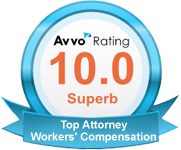About Age Discrimination
Not so long ago, it was socially acceptable to push workers out of their positions—explicitly or subtly—once they reached a certain age. There was a strong sense that if someone was nearing retirement age or had exceeded it, “it was time for them to go.” Then, slowly but surely, solid and capable workers who had a wealth of experience and no need to “slow down” started to push back on the assumptions made by the system generally. For example, in 1940, a group of law professors who had been involuntarily forced to retire from teaching at the age of 65 began teaching at the welcoming UC Hastings Law School. The inclusion of “The 65 Club” helped make UC Hastings famous in legal education by boasting one of the most prestigious faculties in the nation.
After The Age Discrimination in Employment Act of 1967 was signed into law, employment discrimination based on age was prohibited in the United States. Unfortunately, the passage of this legislation did not eradicate age discrimination in the workforce. Over the past few decades, age discrimination concerns have become increasingly prevalent, for example, due to a misperception that older workers cannot manage technology as well as younger workers can. As a result, it is becoming increasingly important for workers approaching the age of 40 and workers in their 40s and beyond to understand their rights under the law. Being well-versed in your rights will help you spot age discrimination as it occurs and inspire you to seek legal guidance if your rights are being infringed upon.
Lawful And Unlawful Employment Discrimination – The Basics
During the early 1960s, there was a dramatic push to codify the basic rights of workers in hiring, employment, and termination as those rights concerned discrimination. Most urgently, the rights of both women and racial minorities needed formal recognition to stem the tide of constant abuse on the part of male and non-minority employers, co-workers, and third parties. To that end, Congress passed Title VII of the Civil Rights Act of 1964 (Title VII), and this measure was signed into law. Title VII explicitly prohibits discrimination in the workplace based on race, color, national origin, religion, and sex.
As groundbreaking as this law was, several workers continued to face widespread discrimination based on so-called “immutable characteristics,” which essentially refer to aspects of a person’s being that they have no control over and cannot change. Perhaps most notably, Title VII had failed to protect workers based on either disability or age. The Americans with Disabilities Act (ADA) addressed the first loophole when it was passed in 1990. The Age Discrimination in Employment Act (ADEA) addressed the second loophole when it became effective in 1968.
The ADEA is a federal law, which means that its protections extend to workers throughout the United States. Many state laws are also concerned with age discrimination. If the protections afforded by state law are more generous than those afforded by federal law, state law serves as the ruling authority in a case filed in that state. For example, the ADEA protects workers aged 40 and older from discrimination in hiring, employment, and termination matters. However, The Minnesota Human Rights Act protects workers aged 18 and older from age discrimination in employment matters. Therefore, the more generous conditions of Minnesota state law allow workers aged 19-39 to file age discrimination lawsuits even though the ADEA does not.
What Does It Mean To Discriminate Based On Age?
Each year, the U.S. Equal Employment Opportunity Commission (EEOC) publishes a report concerning the number and classification of employment discrimination complaints during the previous year. In 2020 alone, the agency received more than 14,000 employment complaints concerning age discrimination. That number comprises one out of every five complaints that the EEOC received. Despite being outlawed in 1968, age discrimination in the workplace remains a powerful influence on the American workforce.
Age discrimination cases don’t always unfold in the same ways, nor is age discrimination always easy to spot. Certainly, there are circumstances under which a worker will be told while being terminated that the company “simply has to make room for someone younger.” However, most age discrimination scenarios unfold in more subtle ways. This is one of the primary reasons it is so important to connect with an attorney if you suspect—but cannot yet confirm—that you are the victim of age discrimination. Those who practice age discrimination law understand both the signs of actionable discrimination and how the law has resolved similar circumstances in the past. You may be entitled to legal recourse, even if you’re not yet sure that you have grounds upon which to build a case.
There are some red flags that workers—especially older workers—should be aware of. Understanding common age discrimination scenarios can help to ensure that employees know when their rights might have been compromised. This knowledge can, in turn, inspire affected workers to seek legal guidance if they may have a cause of action. Instances of employment-based age discrimination may include, but are not limited to:
- Hiring practices that favor younger workers
- The disproportionate hiring of younger workers
- Layoffs that disproportionately affect older workers
- Repeated insults or other offensive comments concerning one’s age, sight, hearing, and other stereotypes associated with aging
- Encouragement to retire
- Involuntary retirement
- Failure to include older workers in work-related social activities
- Alterations in workload that limit challenging duties, important accounts, etc.
- Lack of promotional opportunities for older workers
- Humiliating physical behavior or treatment related to one’s age
- Unreasonable or unjust disciplinary actions
- Salary, bonus, or other compensation disparities by position based on age
Often, age discrimination is veiled and hard to ascertain with certainty. For example, you may not know that you are being offered fewer opportunities to earn compensation than your younger co-workers. However, if you strongly suspect that this is the case, there is likely a good reason for your concern. Our attorneys understand the signs of age discrimination; we can assist you in clarifying the realities that you’re facing and help reveal whatever the truth may be.
MN Employment Lawyers For Age Discrimination
Do you or someone you know potentially have an age discrimination claim against your employer? Federal age discrimination laws protect older employees from being terminated or otherwise mistreated because of their age; however, if you are a younger employee and believe you have been discriminated against, you are entitled to protection under the law as well. The age discrimination attorneys at Heimerl & Lammers are skilled at employment-related claims, including those filed with Minnesota Department of Human Rights (MDHR) and Equal Employment Opportunity Commission (EEOC). For more information, contact Heimerl & Lammers for a free, confidential consultation.
Can Younger Workers Be Lawfully Discriminated Against?
While federal law explicitly protects workers from age discrimination once they reach the age of 40, Minnesota state law protects workers from age discrimination once they reach the age of 18. The Minnesota Human Rights Act recognizes that it is not just older workers who are discriminated against in hiring, employment, and termination matters.
Numerous studies and statistics suggest that far too many American employers take advantage of younger workers in ways that are both ethically wrong and lawful, as well as unlawful ways. Schedule a free, no-risk consultation with our team if you are a young worker in Minnesota who knows or believes that you are suffering discrimination in the workplace due to your age. After listening to your concerns, we will evaluate your situation objectively and thoroughly, clarify your rights, and explain your options under the law. Workers often wait to speak with an attorney until something egregious or urgently pressing has occurred that cannot be ignored. Younger Americans will benefit from learning that legal guidance can be effectively used as a proactive tool. Minnesota state law protects you, but you must ask for legal help before you can avail yourself of the law’s safeguards.
Harassment And Hostile Work Environment
In terms of employment, harassment is generally defined as unwelcome verbal or physical behavior directed at another due to their membership in a protected class. If someone at work is offensively treating you due to your age, you are experiencing harassment. Not all harassment is unlawful. Sometimes, harassment can be annoying, frustrating, or obnoxious and fail to rise to a legally actionable level. This isn’t to say that there is nothing you can do if you are experiencing relatively minor harassment—as all workers deserve to go about their business free from dealing with the targeted, offensive conduct of others. If our legal team determines that the circumstances you’re facing are not legally actionable, we may advise you to speak with your human resources department and can facilitate this communication if you’d like us to advocate on your behalf.
If, however, the harassment you’re experiencing is either so egregious or occurs so frequently that a hostile work environment has developed, your situation is likely legally actionable. Similarly, if enduring offensive conduct has become a condition of your ongoing employment, you are likely in a position to seek legal recourse.
“Hostile work environment” is a legal term, which means that the word hostile has a specific legal connotation that doesn’t always line up with how this word is used in casual conversation. A hostile work environment develops when the severity of the offensive conduct in question or its repetitious nature has become so intense that a reasonable person would view the scenario as abusive, intimidating, or otherwise hostile.
One-time incidents of harassment are not usually enough to prove that a hostile work environment has been created. However, if a past incident is so obviously and egregiously negative, the legal criteria upon which one can build a successful discrimination case may be met. For example, say that John is turning 60 and his boss and co-workers have opted to throw him a lunchtime birthday celebration. John arrives for lunch to discover that the meal’s theme is “R.I.P.,” and everything from the décor to the cake suggests that he is nearing the end of his time on Earth; that one-time incident could be severe enough to prove that a hostile work environment exists.
Most often, hostile work environment cases arise when lesser unwelcome conduct occurs frequently. For example, a co-worker may move a wheelchair into the office of a non-disabled older worker each morning and refer to their colleague exclusively as “grandpa.” If a reasonable person finds any given repetitious conduct abusive, the affected employee may have strong grounds to file a hostile work environment case.
Constructive Discharge
Constructive discharge is a legal term for a scenario in which the ways in which a worker is being treated are so unpalatable that the worker is compelled to quit or retire. Constructive discharge often occurs as a result of harassment. However, many older workers face constructive discharge challenges when they are repeatedly encouraged, manipulated, or otherwise compelled to retire.
Before the passage of the ADEA, workers were regularly told that once they reached a certain age, they would need to leave their positions. This kind of pressure still exists nowadays, but it tends to be exerted more subtly. If you face repeated pressure to quit or retire—either due to harassment or the virtue of your age—it is time to speak with an attorney. Similarly, if you have already quit due to such circumstances, you should explore your legal options now.

Age Discrimination
If you are over the age of forty and believe your age was a factor in a decision about your termination, layoff, being passed for a promotion, or denied a job for which you applied, we may be able to help.
Our Commitment to
Service
Our commitment to you includes:
loading ...
loading ...
You are not alone
We Can Help.
The attorneys and staff at our firm take the time to actually listen to our clients. We will carefully explain the process you are facing and guide you through it while looking out for your best interests. We know that each client’s individual situation is unique and important to them. Therefore, we won’t treat your representation with the “cookie-cutter” approach other law firms seem to take.
If you need to speak with an attorney, contact us today. We can assist with a wide array of issues, including divorce, child custody, family law, personal injury, wrongful death, construction injuries, truck accident injuries, and workers’ compensation.
Get in touch with an attorney today.
Sign Up for Our Newsletter




